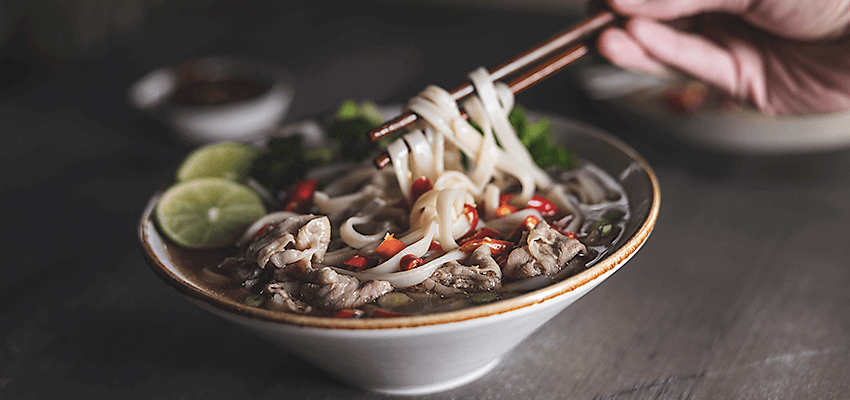
From the simplest nursery rhyme to the grandest concerto, every piece of music is composed of only twelve notes.
The composer’s skill in combining them in new and balanced ways is what turns them into masterpieces. Savory culinary compositions are similar. A chef’s talent is in using the basic building blocks of flavor to craft something entirely new—that is music to the mouth. A single instrument is a joy to hear, but a symphony is an incredible experience.
The depth of the experience at a live performance is amazing—you can hear the pulse of the timpani, the high notes of the flutes, and the complex relationship between the strings. “Like music, truly memorable savory foods are composed of low, middle, and high notes,” says Shane McDonald, Principal Flavor Chemist of Kalsec.
Low Notes Lay the Foundation
The tongue detects five basic tastes: sweet, sour, bitter, salty and umami. The right blend of these basic tastes is the key to composing a symphony of flavor.
All five are important, but umami in particular determines the delectability of savory flavors. Umami is created through the combination of monosodium glutamate and nucleotides, which can be found in yeast extracts, seaweed, tomato pastes, and other foods.
These low notes are rounded out by certain feeling factors, such as heat from chili peppers, cooling from mint, and tingling from Szechuan peppers.
Middle Notes Add Depth
Middle notes are where the characterization of the flavor comes in and are usually supplied by the foodstuff itself. For example, middle notes help us sense whether a flavor is meat, vegetable or dairy. These flavors are modified by cooking to create “brown notes” and can be augmented by yeasts, hydrolyzed vegetable proteins and enzyme-modified foods such as cheese.
High Notes Pull it All Together
These are the food’s aroma, which entice the consumer long before their first bite. Aroma can be increased by cooking techniques, such as roasting or frying. Spices and herbs add to aroma and are vital in most ethnic flavors. Other botanicals, like the versatile floral notes from lavender, can balance out and accentuate the other flavors paired with it. Citrus oil can freshen or brighten up a dish and create a dynamic flavor profile.
Beer Beats:
Complex flavor symphonies aren’t just for food—beverages are also carefully crafted with the perfect blend of notes.

Composing the Finished Food
A truly delicious and memorable savory food is crafted by skillfully blending low, middle and high notes and paying attention to their relative contribution to flavor. “A cooked onion flavor, for example, has low notes of sweetness and umami with middle notes of sulfurous onion, then finishes with caramelized brown notes layered on top,” says Carolyn Suh, Senior Scientist at Kalsec, “It’s all quite complex, but that’s what makes food so delicious!”
Whether you’re creating a culinary symphony or assembling a simple string quartet of a snack, every flavor note needs to blend in perfect harmony for creating fine flavor experiences you’ll never forget.